Georgian Food Dishes: Basic Overview
Common Ingredients
Common Cooking Methods
Courses
Meals
Key Taste
Eating Etiquette
Meal Presentation
Culinary Festivals
Influence and Fusion
Popular Types of Georgian Dishes
-
Desserts
Georgian desserts are rich in nuts and fruit juices, with distinctive textures ranging from chewy, nutty candies to thick, jelly-like porridges.
These sweets often incorporate traditional sun-drying or chilling techniques, highlighting local ingredients like walnuts and honey.
-
Stews
Stews in Georgian cuisine feature meat and vegetables slow-cooked with unique spices and ingredients like tkemali sauce, offering deep flavors.
These stews, essential for communal meals and celebrations, embody the slow-cooking tradition of Georgian culinary culture.
-
Bread and doughs
Bread and dough-based dishes are diverse in Georgian cuisine, from cheese-filled breads to spiced meat or vegetable dumplings.
Made with leavened dough for softness and varying shape, these staples highlight traditional baking techniques and regional variations.
-
Vegetarian dishes
Georgian vegetarian dishes are vibrant, utilizing vegetables, beans, and nuts, seasoned with bold spices and herbs.
Bean stews, vegetable spreads, and eggplant dishes demonstrate the variety and richness of Georgia’s vegetarian options, rooted in the country’s agricultural abundance.
Georgian dishes are well-known and celebrated culinary items originating from Georgian cuisine. Interestingly, Georgian cooking is a combination of Caucasian, Eastern European, and Middle Eastern culinary delights.
Each region in the country has its own interpretation of dishes, contributing to the rich diversity. Some of the most popular Georgian regional cuisines are Abkhazian, Adjarian, Gurian, Imeretian, Kakhetian, Kartli, and Samegrelo cooking.
Furthermore, Georgia was part of the Silk Road, which explains the country’s diverse use of spices in its specialties. Also, the locals of Georgia love featuring bread in their meals, with various flatbread variations to accompany all sorts of dishes.
Exploring these beloved Georgian delicacies, with their rich origins, ingredients, and cooking methods, is delightful. Some offerings even come with delectable accompaniments to spice up your experience.
After the dishes, you should keep your spirit going by venturing further to discover the features that introduce Georgian delicacies to the world and how those dishes stand against Armenia’s offerings. Then, remember to discover the best pairings of dishes and beverages in Georgia.
22 Popular Georgian Dishes with Filters
Don’t forget to use the filter system to see these Georgian dishes in alphabetical order, tastes, ingredients, cooking methods, dish types, and worldwide popularity.
Later on, let’s uncover the culinary styles available in Georgia with choices like the most popular, national, traditional, and street food:
Khachapuri
- National
- Street Food
- Traditional
Khachapuri is a national Georgian dish featuring fluffy handmade bread, fresh or aged cheeses, and a runny egg in the middle. This popular bread specialty employs leavened dough before shaping it. Overall, it’s super cheesy and tasty; it is also a popular street food item.
This cheesy bread has a boat shape with egg yolk in the middle. Furthermore, each region adapts khachapuri differently, like Imeretian khachapuring, having a round shape and cheese.
Another notable variety is Rachuli khachapuri, which comes in a rectangular shape along with cheese and bacon.
Ideally, locals will tear the bread pieces to dip the cheese and egg yolk filling to enjoy khachapuri. The people here in Georgia love this bread dish so much that they even dedicated a special day (27th February) to celebrate this timeless pastry.
Khinkali
- Street Food
- Traditional
Khinkali is a celebrated Georgian dish, having a larger size and unique fillings of meat, fish, vegetables, and spices. The dumplings are materialized by enclosing uncooked filling in dough, which is then twisted into knobs and boiled.
This technique traps the juices inside, creating a flavorful experience enjoyed with or without black pepper. Furthermore, khinkali is a festive staple in Georgia and beyond, commonly sold by street vendors and served at special occasions like weddings and family gatherings.
Mtsvadi
- Street Food
- Traditional
Mtsvadi, also known as shashlik, is a favorite dish in Georgia and has its origins in the Caucasus and Central Asia. This versatile dish features skewered and grilled meat, ranging from lamb and pork to beef, chicken, or fish.
Cooked over charcoal or wood fire, the skewers often include pieces of fat, onion, tomato, bell pepper, or mushroom, adding to its smoky flavor.
In Georgia, mtsvadi is a street food dish commonly served with various accompaniments like bread, cheese, salad, pickles, or sauces, and even goes well with local dishes like khachapuri, lobio, or mchadi.
Churchkhela
- Street Food
- Traditional
Churchkhela is a Georgian candy renowned for its candle shape. The sweet treat is the result of combining nuts and thickened juices like grape must, mulberry, or other fruit juices.
The name “churchkhela” is derived from the Georgian term for sausage and is recognized in various regions throughout Georgia and Abkhazia.
People make churchkhela by threading nuts onto a string and immersing them in a thickened juice known as tatara or pelamushi. Then, the candy is sundried.
Historically, Georgian warriors would carry this high-calorie snack during wartime. Additionally, churchkhela is commonly found on the streets and holds a special place in festive celebrations, often served as a dessert during New Year and Christmas events.
Lobio
- Traditional
Lobio is a traditional Georgian dish primarily made from various types of beans, enhanced with ingredients like coriander, walnuts, garlic, and onion. The most popular version today features red kidney beans, a New World ingredient introduced to Georgia after 1500.
Typically cooked in a clay pot with water and spices, the beans are either mashed or left whole and are often marinated overnight with vinegar and chili pepper for a spicy and sour kick.
The bean stew has both hot and cold versions, suitable for any season of the year. The cold one (lobio nigvzit) features herbs, marigold petals, and vinegar. Alternatively, the hot version contains meat and is served in a clay pot with a side of cornbread or cheese.
Kharcho
- Traditional
Kharcho (or Harcho) is a Georgian soup made with fatty pieces of beef (typically chuck or brisket), cherry plum puree, rice, and chopped walnuts. The locals sometimes add a bit of Khmeli-suneli (a traditional Georgian spice mix) to the soup to bring it to the next level.
Another critical ingredient of kharcho is the cherry plum puree, a souring agent made from tkemali that gives this thick and hearty soup a distinctive flavor. Aside from beef, other proteins like pork, goose, or chicken are suitable for kharcho.
This famous winter soup is often served with crusty bread. Plus, this Georgian beef soup pairs well with a glass of fine Georgian wine to make the experience more enjoyable.
Tolma
- Traditional
Tolma is a beloved dish of stuffed vegetables or leaves that offers a plethora of variations. The dish is made with various fillings, including meat, rice, herbs, cheese, or mushrooms, which are either wrapped in cabbage or vine leaves or stuffed into hollowed-out vegetables.
Typically cooked by boiling or baking, tolma is served with an array of accompaniments such as sauces, bread, cheese, or salads. It is a festive dish, often prepared for special occasions like weddings, holidays, and family gatherings, making it a beloved choice for celebrations.
Satsivi
- Traditional
Satsivi is a cherished Georgian dish featuring poultry, either chicken or turkey, combined with a distinctive walnut sauce and served cold. The sauce itself is a blend of walnuts, water, garlic, dried herbs, vinegar, cayenne pepper, and salt.
Notably, both the dish and the sauce go by the name “satsivi.” A popular choice for winter holidays in Georgia, satsivi is also suitable for vegetarians by using eggplants or cauliflower as substitutes for poultry. Satsivi is especially a favorite during festive seasons.
Ajika
- Traditional
Ajika, or adjika, is a hot, spicy, yet mildly flavored Georgian paste, used to flavor many popular dishes. In Georgia, the dish consists entirely of peppers. The hot paste is an essential part of Georgian cuisine and history, included on Georgia’s list of Intangible Cultural Heritage in 2018.
This paste includes garlic, salt, red peppers, and spices that are enjoyed raw as a condiment or used to flavor a variety of Georgian dishes like grilled meat, seafood, soups, vegetables, and salads.
Ajika traditionally uses sun-dried red peppers, but there’s also a version with unripe peppers. In this case, ajika will be green, not red.
Lobiani
- Street Food
- Traditional
Lobiani is a traditional Georgian bean-filled bread usually sold by street vendors. The name “lobiani” derives from the Georgian term for beans, “lobio,” which is the central ingredient in this dish.
Commonly, the dough for lobiani incorporates matsoni, a specific type of yogurt, and demands more kneading than the dough used for khachapuri. The filling consists of pre-boiled beans, with the rachuli lobiani variety, shaped like a round pie, being the most popular.
Shotis Puri
- Street Food
- Traditional
Shotis puri is a Georgian bread made from white flour and distinctively shaped like a canoe. This traditionally loved bread, often simply called shoti, is baked in a unique bakery known as a tone, sometimes referred to as torne/turne.
This establishment features a round brick or clay oven, reminiscent of the tandoor found in other culinary traditions. Shotis puri is usually eaten anytime, anywhere in Georgia.
However, it is more prevalent during special occasions and holidays like birthdays, weddings, Christmas, Easter, and New Year’s Eve.
Chakapuli
- Traditional
Chakapuli is one of the most renowned Georgian stews and a staple in the country’s culinary landscape. Traditionally made from lamb chops or veal, the dish incorporates numerous flavors from onions, tarragon leaves, and cherry plums or tkemali sauce.
As for the cooking process, the stew involves boiling the meat with wine in a deep pan, followed by extended oven-baking. Toward the end, tkemali sauce, greens, and garlic are added for a final burst of flavor.
Additionally, beef or mushrooms are great swaps for lamb. Locals often serve chakapuli hot during the Orthodox Easter feast with Georgian bread on the side.
Chanakhi
- Traditional
Chanakhi is another traditional Georgian stew creation, mainly utilizing lamb with the addition of tomatoes, potatoes, and aubergines. This popular stew is made in layers, with lamb at the bottom and vegetables stacked on top.
Surprisingly, chanakhi used to be split into individual portions and cooked in small pots. However, nowadays, people often prepare the stew in a big pot to save time.
Commonly, people add a little bit of water to the oven to slowly bake the ingredients. For serving, chanakhi goes great with bread and cheese.
Chakhokhbili
- Traditional
Chakhokhbili is a sought-after Georgian stewed chicken dish with tomato and fresh herbs. In the past, people used pheasant meat to make the stew. In fact, the name itself is derived from the word khokhobi, meaning pheasant in Georgian.
But since pheasant is relatively inaccessible nowadays, chicken has become a go-to alternative. The trick to making the most delicious bowl of Chakhokhbili is to use homegrown tomatoes.
Ajapsandali
- Traditional
Ajapsandali is a cherished eggplant stew celebrated in Georgian as well as in the Northern Caucasus. Composed mainly of vegetables like onion, eggplant, tomato, and bell pepper, the dish is cooked in oil and seasoned with tons of spices, including garlic, basil, coriander, and parsley.
Depending on regional preferences and cooking styles, ajapsandali is also grilled, stewed, or fried. Some variations even include additional ingredients like potato, chili pepper, or carrot.
Kuchmachi
- Traditional
Kuchmachi is a traditional Georgian offal dish known for its hearty and satisfying qualities, perfect for feeding a crowd.
Made primarily from offal, coming from chicken, pig, or beef, the dish is cooked with butter, onion, garlic, and a blend of spices like bay leaf, black pepper, salt, and coriander.
Some even add walnuts for an extra layer of flavor. Kuchmachi is typically garnished with pomegranate seeds and often enjoyed with bread and cheese when served hot.
Pkhali
- Traditional
Pkhali is a chopped and minced Georgian vegetable dish made with different veggies, garlic, herbs, and ground walnuts. Although pkhali used to be a famine food, it is still a common and well-loved dish in modern Georgian cooking.
Sometimes, this chopped vegetable dish is also known as mkhali. Pkhali also has many variations, the most well-known being chicken pkhali, or katmis mkhali. The traditional pkhali usually comes in three types in Georgian restaurants, featuring spinach, beetroot, and white beans.
Matzoon
- Traditional
Matzoon is a fermented milk product in Georgia, originating from Armenia, and widely consumed in both countries. Interestingly, its name stems from the Armenian term for sour or glue.
Produced from various types of milk and culture from previous batches, matzoon boasts a high viscosity due to the polysaccharides generated by the bacteria.
Depending on its processing, matzoon has a range of products, including kamats matzoon, butter, tan, chortan, and tarhana, each playing a role in diverse culinary dishes.
Pelamushi
- Traditional
Pelamushi is a Georgian dessert porridge traditionally prepared in the autumn season. This dish is favored thanks to its thick, hard, chilled jelly consistency, achieved by combining grape juice and flour.
Typically, pelamushi is garnished with peeled nuts or paired with gozinaki, a beloved Georgian candy crafted from nuts and honey.
Gozinaki
- Traditional
Gozinaki is a classic Georgian dish made with honey-fried and caramelized nuts (mainly walnuts). These traditional candies are frequently shaped into diamonds and popularly eaten during New Year’s Eve and Christmas.
Gozinaki used to be called churchkhela in the western Georgian provinces of Imereti and Racha, which is understandable since both recipes call for walnuts. Walnuts and honey were once considered sacred in numerous rural Georgia communities.
Sulguni
- Traditional
Sulguni is a brined Georgian cheese known for its sour, salty flavor, dimpled texture, and elastic consistency, earning it the nickname “pickle cheese”. This beloved Georgian cheese is produced using cow, buffalo, or mixed milk combined with a bacterial starter or rennet.
The production process involves cheddaring, dicing, heating, plasticizing, and hand-shaping. Then, sulguni is cured in cold brine for up to two days. Commonly, people enjoy sulguni in wedges, deep-fried, or as a key ingredient in other Georgian dishes.
The cheese goes by different names in various regions of Georgia and its neighboring areas, with the most common name deriving from the Mingrelian word for kneading. Traditionally, sulguni was a product of local farmers before being taken over by industries.
Kubdari
- Traditional
Kubdari is a Georgian-filled bread delicacy, also known as Kubed, that is especially cherished among the Svans, an ethnic group in Georgia. This bread undergoes a leavening process, allowing it to rise, and is then filled with chunks of meat such as lamb, kid, or pork.
The meat is complemented with traditional Georgian spices and onions, creating a rich and flavorful filling that makes this Georgian delight so loved.
Why Are Georgian Dishes So Popular?
Georgian cuisine is popular for 5 main reasons below:
Are Georgian Dishes Spicy?
No, Georgian cuisine is not typically based on spiciness. However, it does incorporate a variety of spices and herbs that give the dishes their unique flavors. The spicy condiment “ajika” is a popular addition to many dishes, providing a kick of heat.
Surprisingly, given the close proximity and shared history of Georgia and Armenia, it’s natural to draw comparisons between the flavors of Georgian cuisine and those of its Armenian neighbor.
How Do Georgian Dishes Compare to Armenian Dishes?
Both Georgian and Armenian cuisines are deeply rooted in their respective histories and geographies, with some overlapping elements due to their proximity. A shared love for bread is evident in Armenia’s thin “lavash” which contrasts with Georgia’s cheese-filled “khachapuri.”
Dumplings are also central, with Georgia’s “khinkali” paralleling Armenia’s “manti.” Grilled meat, such as Georgian “mtsvadi” and Armenian “khorovats,” are popular in both cultures, as is the extensive use of walnuts and a rich tradition of winemaking.
To take a closer and more straightforward look at the differences between Georgian and Armenian culinary treasures, I suggest taking a look at these features.
Georgian Dishes
Armenian Dishes
After knowing about the differences between Georgian and American food, let me show you how to elevate the flavors of these specialties by pairing them with the right beverages.
What Georgian Dishes to Pair with Beverages?
Don’t just stop at the dishes only, as the right Georgian beverages can greatly elevate your meal experience to a whole new level:
Before you go, don’t forget to jot down the names mentioned above. Try them all out if you can. Life’s short; enjoy yourself! Remember to share and comment on your favorite dishes. Thank you for being so supportive! Take care, and see you all next time!








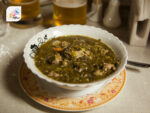
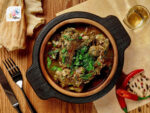
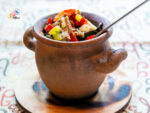






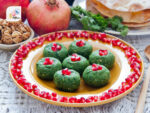
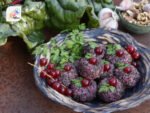
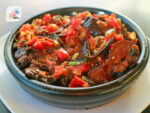

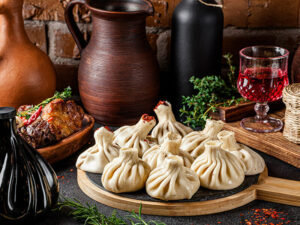
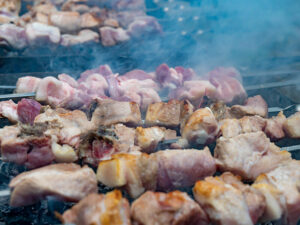
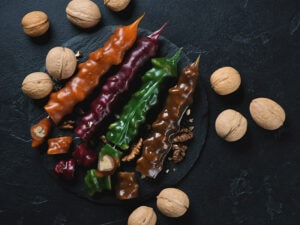
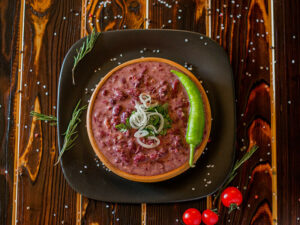
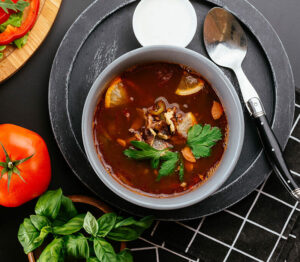
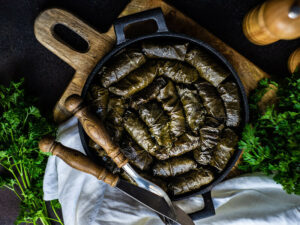
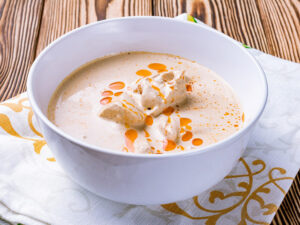
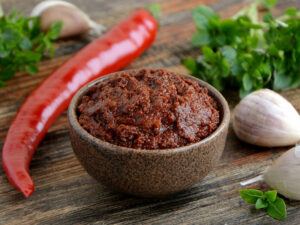
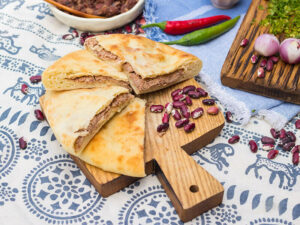
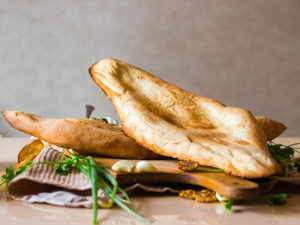
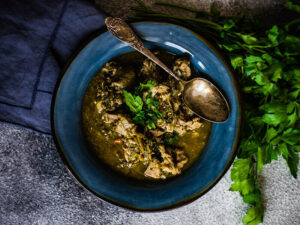
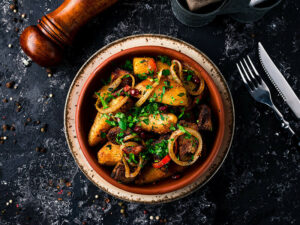
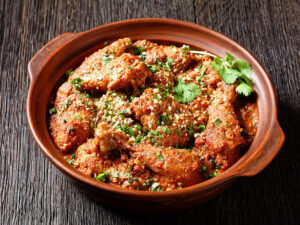
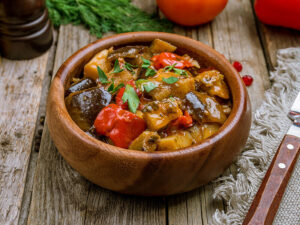
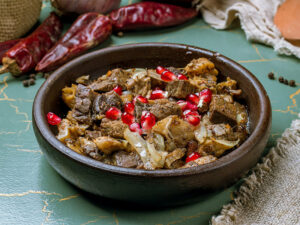
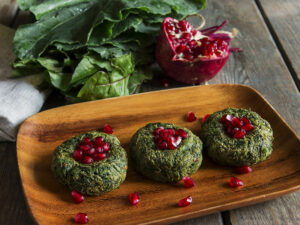
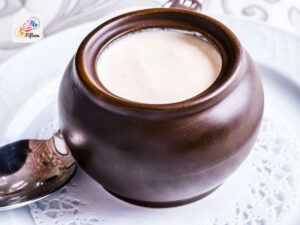
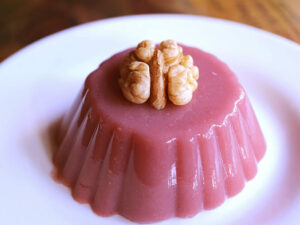
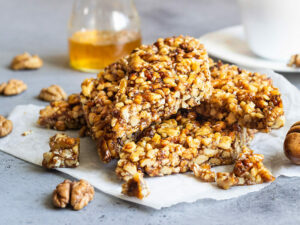
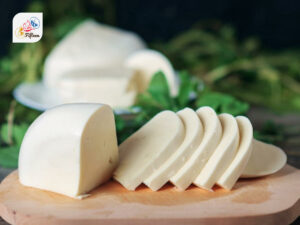
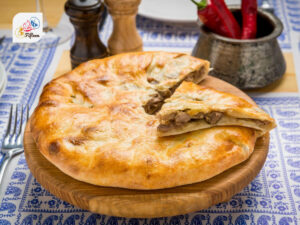
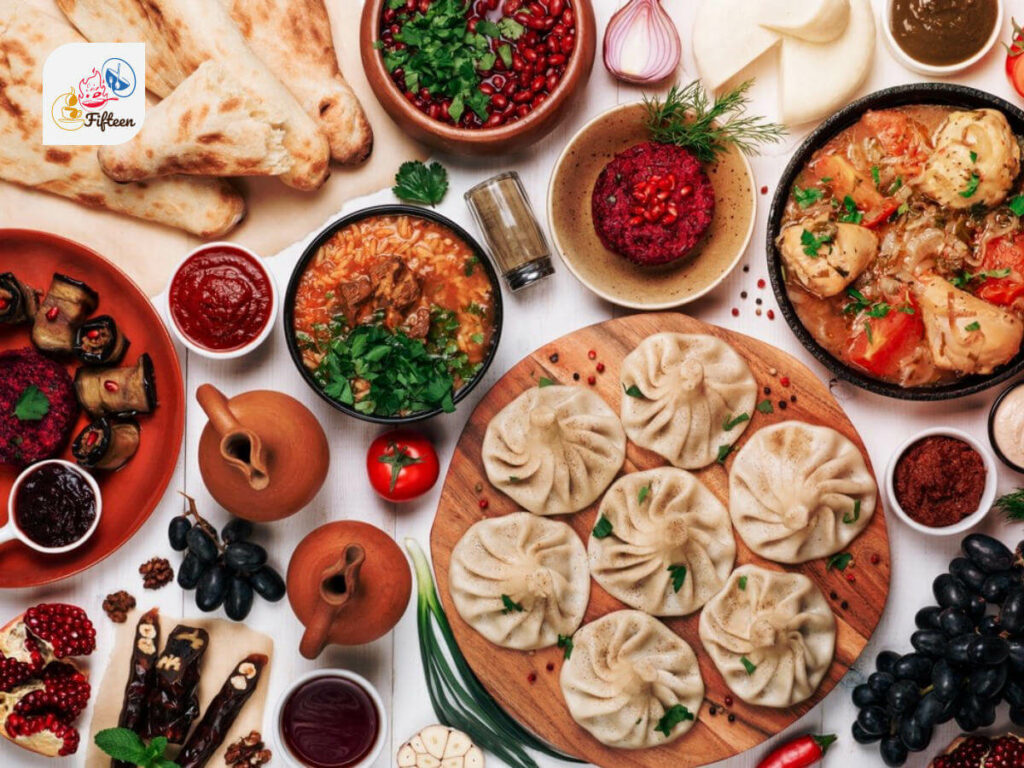

Jamie Scott
Editor in Chief, Senior Content Writer
Expertise
Home Cooking, Meal Planning, Recipe Development, Baking and Pastry, Food Editor, Cooking-video Maker, Western Food Evaluation Expert
Education
Le Cordon Bleu College of Culinary Arts
Local Community College, New York, NY
Jamie Scott is a skilled culinary expert and content creator specializing in Western cuisine. With over 15 years in the culinary field and formal training from Le Cordon Bleu, Paris, Jamie deeply understands how to blend nutrition with delicious flavors. His passion for cooking matches his commitment to making healthy eating accessible and enjoyable.
On Fifteen.net, Jamie brings a fresh perspective to classic dishes and beverages, offering readers insightful recipes, cooking tips, and a fresh view on meal planning that emphasizes taste, health, and simplicity.